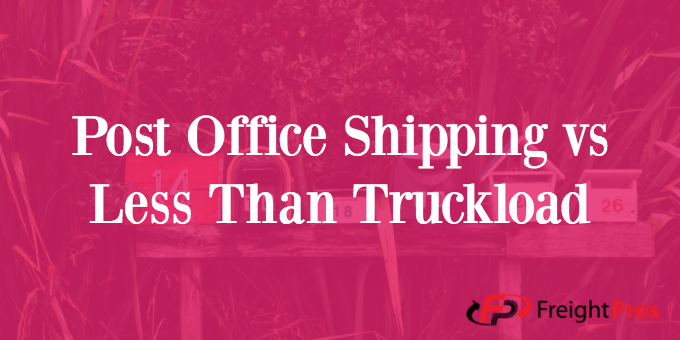
A quick peak at Wikipedia will inform you that the United States Postal Service was founded in 1971. That will seem a bit late, but keep reading and you’ll learn it was preceded by a number of independent courier organizations such as the United States Post Office (USPO) in 1775.
In 1792, the Post Office Department (USPOD) was officially formed. Prior to these official organizations, people have been concerned about post office shipping since the beginning of the United States, as riders criss-crossed New England in the early 17th century passing mail to and fro.
In the past, there was romance surrounding post office shipping. Evolving technology brought new forms of communication, making it easier and, pardon the modern vernacular, cooler, to pass messages from one person to the next. The impact this communication and technology had on our civilization is impossible to wholly quantify, especially in a blog this size.
Lately, post office shipping has existed under a fat black cloud. The economical issues faced by the United States over the past decade have put a whole in many folks wallets, and the USPS is no different.
The discussion of the legacy of the USPS is a conversation for a different time though, because today I’m going to go over a few little differences between post office shipping and LTL shipping.
Weights
The first thing to keep in mind with post office shipping is the weight limit. Per the USPS website the maximum weight your package can weigh is 70lbs. Anything over that, and USPS won’t be able to accommodate the shipment. Compare this to LTL shipping, and you’ll find that 70lbs is the bare minimum that you should think about shipping LTL. As you can see, they are not competitors.
Pickups/Deliveries
Post office shipping services have expanded in recent years, as the USPS attempts to keep up with its direct competitors Fedex and UPS. Fedex offers LTL rates, and there are also UPS ltl rates to contend with, but they ship items of all shapes and sizes so they are a competitor to both the USPS as well as LTL carriers and online freight brokers.
The USPS now offers to pick up your package from your home via appointment, though this wasn’t always the case. In the past, you would have to deal with the lines and crowds of the post office if you wanted to ship something.
In LTL shipping, the carriers provide business pickup and delivery services for free because the average weight and size of an LTL shipment is too large to easily transport to a carrier terminal or hub (though it is possible to pickup or drop off freight directly at the terminal).
Packaging
Packaging for post office shipping is very different from the packaging required for LTL freight shipping. As I said before, post office shipping usually deals with smaller shipments in both weight and size. The standard packaging for post office shipping is a cardboard box stuffed with packing peanuts and other similar packing materials.
LTL shipping on the other hand deals with larger shipments, so a standard sized pallet or a standard crate is usually used to package the material. This makes it easier for the carrier to use a forklift to transport the freight from dock to dock.
Because LTL shipments are usually less protected, we also suggest getting third party freight insurance if you’re planning on shipping fragile items less than truckload.
These are the basic differences between Post Office Shipping and LTL shipping, but if you’d like to learn more about the latter, download our FREE freight shipping guide today!